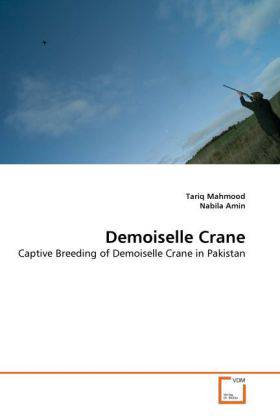
- Afhalen na 1 uur in een winkel met voorraad
- Gratis thuislevering in België vanaf € 30
- Ruim aanbod met 7 miljoen producten
- Afhalen na 1 uur in een winkel met voorraad
- Gratis thuislevering in België vanaf € 30
- Ruim aanbod met 7 miljoen producten
Zoeken
Demoiselle Crane
Captive Breeding of Demoiselle Crane in Pakistan
Tariq Mahmood, Nabila Amin
Paperback | Engels
€ 48,45
+ 96 punten
Omschrijving
In the past, four crane species were recorded in Pakistan including demoiselle crane (Anthropoides virgo), Eurasian crane (Grus grus), Siberian crane (Grus leucogeranus) and the Sarus crane (Grus antigone). But more recently only two species (demoiselle and Siberian cranes) winter here while the other two are thought to be extinct from here. In Pakistan crane species face various threats including hunting, live trapping and habitat loss. River Indus around Dera Ismail Khan provides attractive sites to the migrating cranes and according to an estimate about 1,000 cranes are hunted on this particular site. In the past, usually 100-200 cranes were seen on river beds each day, staying for a short rest period during spring season. But now due to widespread disturbance along their migration route, they cannot find a chance to feed and rest here and so are compelled to take unusually long journeys to get out of Pakistan. Large populations of demoiselle crane, however, occur in captivity at Bannu, Lakki Marwat and adjacent tribal areas of northern Pakistan.
Specificaties
Betrokkenen
- Auteur(s):
- Uitgeverij:
Inhoud
- Aantal bladzijden:
- 68
- Taal:
- Engels
Eigenschappen
- Productcode (EAN):
- 9783639367218
- Verschijningsdatum:
- 24/07/2011
- Uitvoering:
- Paperback
- Formaat:
- Trade paperback (VS)
- Afmetingen:
- 152 mm x 229 mm
- Gewicht:
- 113 g

Alleen bij Standaard Boekhandel
+ 96 punten op je klantenkaart van Standaard Boekhandel
Beoordelingen
We publiceren alleen reviews die voldoen aan de voorwaarden voor reviews. Bekijk onze voorwaarden voor reviews.











